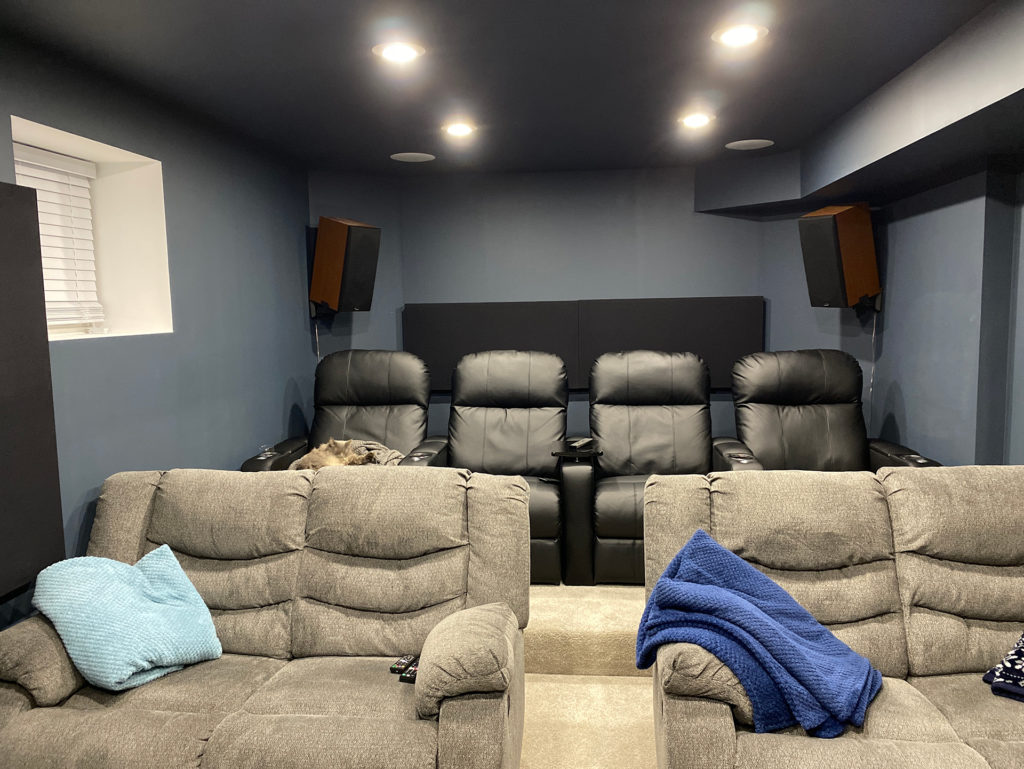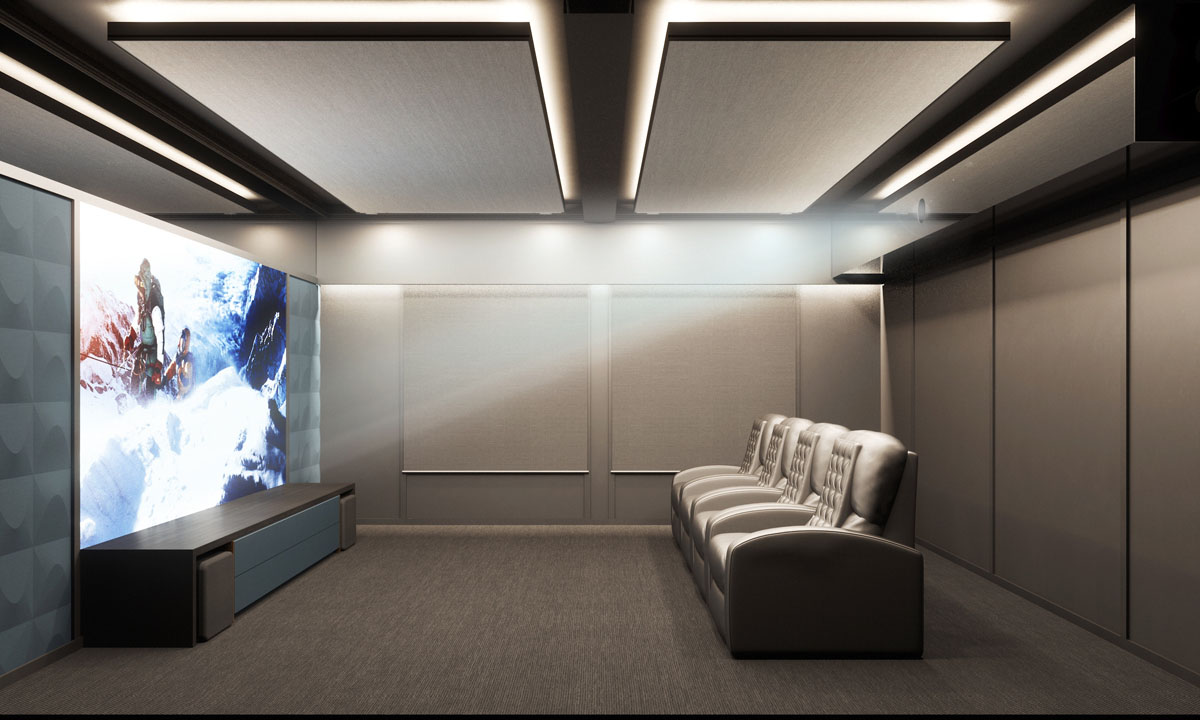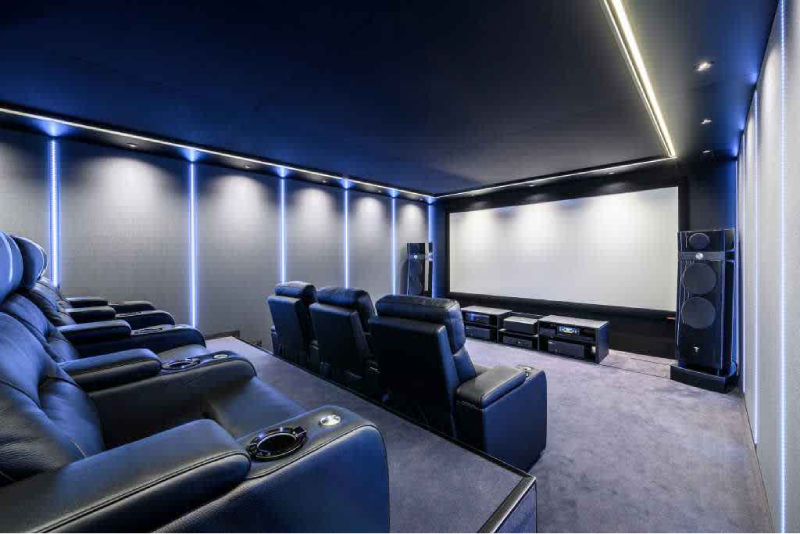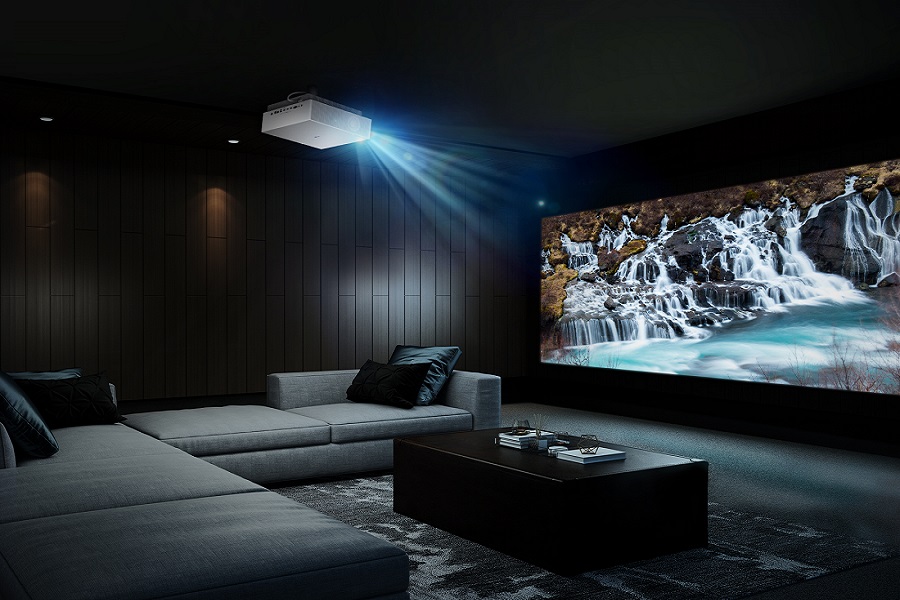How to Locate the Top Home Theater Tampa Installation Professionals
How to Locate the Top Home Theater Tampa Installation Professionals
Blog Article
Home Theater 101: Everything You Required to Know for a Cinematic Experience in your home
Developing a home movie theater that equals the cinematic experience of a commercial theater involves cautious consideration of numerous parts, consisting of screen choice, sound systems, and space layout. Each element plays a crucial role in achieving the preferred setting and capability. Whether you are considering the ideal display dimension or the ins and outs of surround audio, comprehending these fundamentals is crucial. As we explore these crucial components, it becomes evident that the choices made can substantially affect your overall watching experience, leaving one to consider how these decisions will certainly shape your personal movie theater.
Choosing the Right Screen
When establishing a home movie theater, choosing the best screen can make or damage the viewing experience - tampa home theater installation. The screen acts as the focal point of your configuration, influencing photo top quality, seeing angles, and overall visual. Secret factors to take into consideration consist of screen size, type, and resolution
First, identify the suitable screen dimension based on your room measurements and seating range. Next, select in between various display kinds, such as fixed-frame, motorized, or retractable displays, each offering distinctive advantages.
Resolution is one more essential element. For an absolutely immersive experience, consider a screen created for 4K and even 8K content, making certain sharpness and clarity. Furthermore, take into consideration the display's gain, which affects brightness and contrast; a higher gain can improve illumination in well-lit areas, while a lower gain may be much more appropriate for darker settings.
Picking Audio Equipment
Audio equipment is an essential component of any kind of home theater system, significantly enhancing the general watching experience. The choice of audio gear can determine the depth, clarity, and immersion of sound, important for developing a cinematic atmosphere.
When choosing audio equipment, take into consideration a border audio system, which commonly consists of a receiver, numerous audio speakers, and a speaker. A 5.1 or 7.1 network system is suggested, where the very first number stands for the audio speakers and the 2nd the speaker, offering an immersive soundscape. The receiver is the heart of the system, managing audio and video signals, and should sustain modern-day styles like Dolby Atmos for an improved spatial experience.
Quality speakers are essential; try to find versions that use a balanced sound account with excellent bass action. Floor-standing speakers can generate richer audio, while bookshelf options conserve area. Furthermore, consider cordless alternatives for simplicity of installation, although wired systems often supply premium efficiency.

Optimal Seating Arrangements
Creating an optimal home movie theater experience pivots substantially on ideal seating setups. The setup of seats plays an important duty in both convenience and seeing high quality, directly affecting the total motion picture experience.
First, think about the display size and viewing distance. A typical standard is to position seats at a range about 1.5 to 2.5 times the angled size of the display. This makes sure an immersive experience without straining the eyes.
Next, altitude is vital. The back rows should be greater than the front to prevent obstructions if your seats is in a tiered format. For level seating, ensure that the front row is not also near to the display, and that every person has a clear view.
Furthermore, take into consideration the plan in terms of social characteristics. Group seats can enhance the common experience, while individual seats might be preferred for individual viewing.

Lastly, focus on convenience with ergonomic seating that sustains extended watching durations. Integrating reclining chairs or cushioned seats can substantially enhance the experience, making the home movie theater a recommended destination for both amusement and relaxation.
Lighting and Ambiance
Efficient illumination and setting are vital components of a well-designed home theater, as they substantially affect the seeing experience. The appropriate lighting can enhance the cinematic feel, click site while inadequate choices can detract from it. For ideal outcomes, consider a layered illumination strategy that consists of ambient, task, and accent lighting.
Ambient illumination supplies basic lighting, ensuring that the space is not totally dark, which can stress the eyes. Dimmer switches are extremely advised, enabling adjustments based on the content being viewed. Task lighting, such as wall sconces or floor lamps, offers functional illumination for activities like reading or navigating the room without disrupting the overall atmosphere.
Accent lights can be made use of to highlight architectural features or create focal factors, including depth and interest to the area. LED strip lights behind displays or along shelves can provide a refined glow that enhances the aesthetic experience without overwhelming the viewer.

Wiring and Installation Tips
A well-planned wiring setup is critical for attaining optimum efficiency in your house cinema system. Correct electrical wiring not only guarantees top quality audio and video signals yet likewise improves the overall visual of your area. Begin by mapping out your format, determining where each component will certainly be put, including your display, audio speakers, and receiver.
When choosing cables, focus on top notch, properly determined electrical wiring to decrease signal loss. HDMI wires must be used for video clip connections, while audio speaker cable should match the specs of your speakers and amplifier. Select in-wall rated wires to abide pop over to this site by security standards and keep a clean look.

Final Thought
In recap, creating an exceptional home theater experience requires cautious factor to consider of numerous elements, including screen selection, audio equipment, seating plans, lights, and circuitry. By focusing on these factors, a cinematic atmosphere can be successfully duplicated, enabling for immersive checking out experiences that equal typical cinema settings.
Developing a home cinema that measures up to the motion picture experience of a commercial theater entails careful consideration of multiple parts, consisting of display choice, audio systems, and space design.When setting up a home movie theater, choosing the right screen can make or break this content the viewing experience. Next, pick between various display kinds, such as fixed-frame, motorized, or retractable screens, each offering distinct benefits. For an absolutely immersive experience, take into consideration a screen designed for 4K or also 8K web content, making sure sharpness and clarity.In recap, producing an exceptional home cinema experience needs careful factor to consider of different elements, consisting of display selection, audio tools, seating plans, lighting, and circuitry.
Report this page